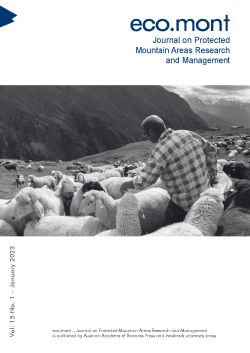
Eco.mont Vol. 15 Nr. 1, pp. 25-37, 2022/12/27
Journal on Protected Mountain Areas Research and Management

Mining data from social media platforms has become increasingly popular to explore aspects of human behaviour, including attitudes towards the natural environment or visiting protected areas. Most studies and analytical algorithms refer to digital content published in English. However, it is also useful to conduct research in other languages to complement existing international studies. Our main aim was to explore Twitter content on national parks, published between 2006 and July 2021, in German. The study also presents a differentiated analysis for tweets published in 2019 and 2020 on national parks and associated with the Covid-19 pandemic. The tweets came from German-speaking countries, but also other countries worldwide. The most frequently mentioned national parks were located mainly in mountain areas, yet terms, hashtags, emojis and topics directly relating to mountains were rare in comparison to other subjects. Tweets most frequently included words such as forest (Wald), holiday (Urlaub) and nature (Natur); messages related not only to the natural heritage and environmental protection but also to natural disasters. The Covid-19 pandemic and national parks were also a subject of discussion on Twitter, often accompanied by photographs or videos. As 85% of all the tweets studied were never retweeted, 92% never received a reply, and 74% were never assigned likes, we conclude that there is potential to improve (social media) communications by users interested in protected areas in mountainous regions.
Keywords: Twitter, German language, national park, protected area, mountains, social media, visitor monitoring, Covid-19